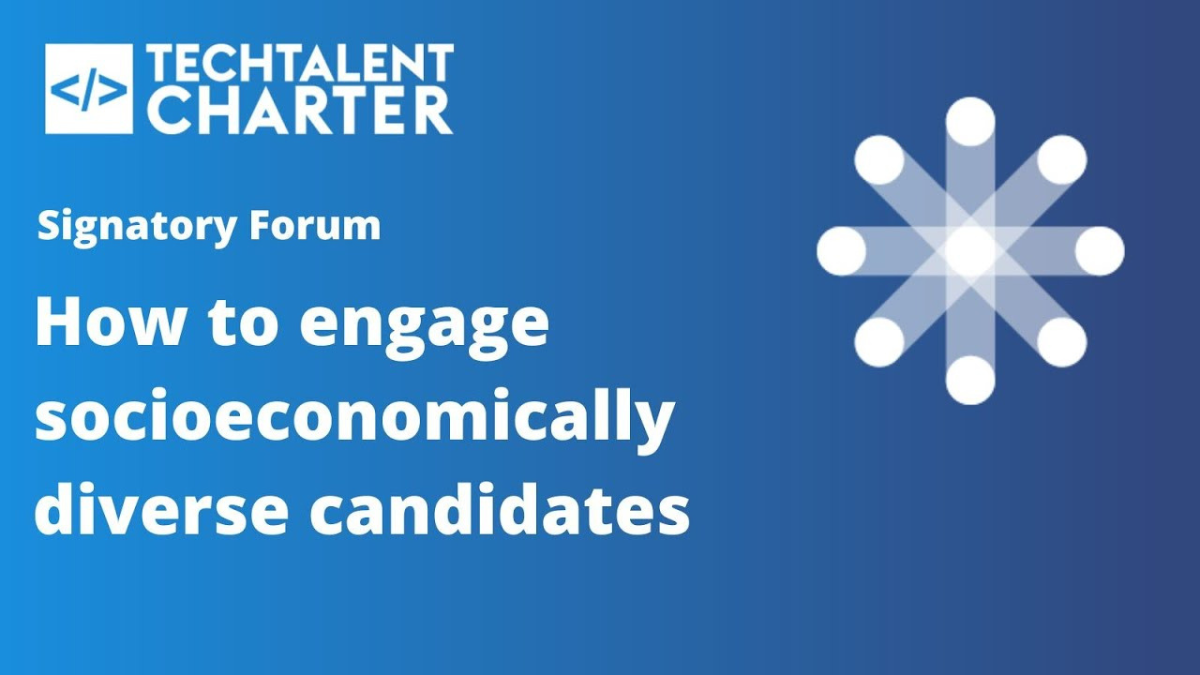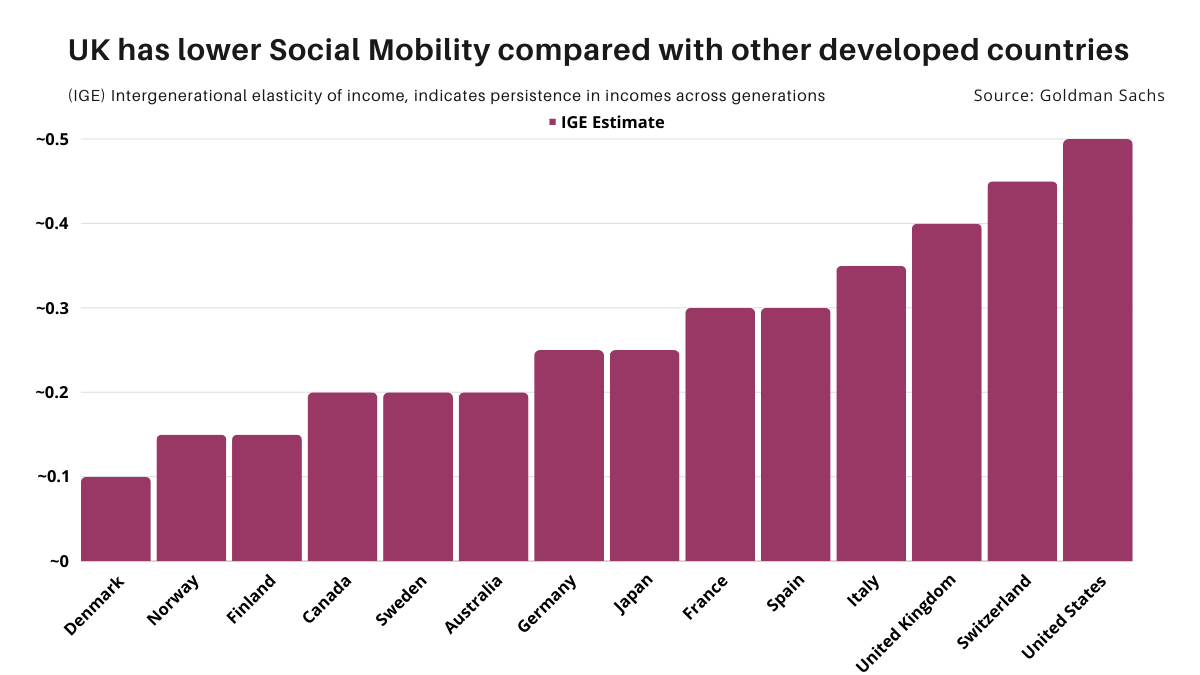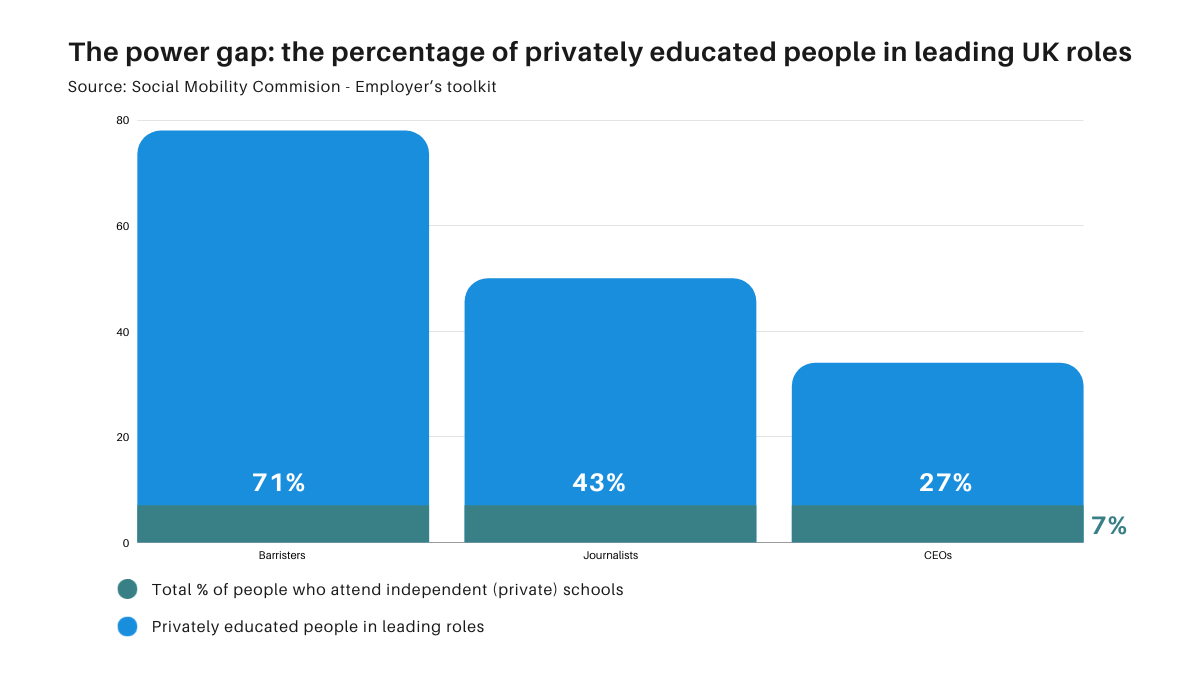How to engage socio-economically diverse candidates

The tech industry's commitment to diversity often focuses on gender and ethnicity, but what about socio-economic diversity? In our recently launched ‘Diversity in Tech’ report, we found that only 1 in 3 tech companies are tracking socio-economic diversity, mirroring the makeup of elite professions such as journalism.
As we approach the Class Pay Gap Day - the day on which those from low socio-economic backgrounds symbolically stop earning compared to their peers from more privileged backgrounds - it's a powerful moment to think about the benefits of incorporating a variety of socio-economic backgrounds into the workforce. The State of the Nation 2023 report casts a stark light on current inequalities. For instance, it finds that adults with lower working-class parents are three times more likely to remain in working-class occupations than those with professional parents. This calls for a strategic approach to dismantle systemic barriers and foster social mobility—a mission where the tech industry can lead by example, leveraging its job creation potential.
The tech industry's struggle to achieve socio-economic diversity reflects broader societal issues. The UK faces significant challenges with social mobility, as highlighted by Goldman Sachs research. Disadvantaged individuals have a harder time moving up the socioeconomic ladder, while those at the top tend to stay there. The pandemic has exacerbated these disparities, causing job losses and reducing educational opportunities. The UK ranks low for social mobility globally, above only the US and Switzerland.

The IGE is a measure of how much a child's income is correlated with their parents' income. A higher IGE means that children's incomes are more closely tied to their parents' incomes, and therefore that social mobility is lower. This means that a child born into a low-income family in the UK is more likely to remain in a low-income family as an adult than a child born into a low-income family in Denmark.
Understanding socio-economic bias
To delve deeper into socio-economic bias, we invited our Signatory, Daniel Ball, Founder and CEO of The Ladder Group, to share his insights. Ball's own personal story offers a compelling perspective. He didn't follow the traditional route of higher education, instead, he began his professional journey at the age of 18 after turning down an offer to study at Cambridge University. In 2021, during the first COVID lockdown, he founded The Ladder Group, challenging the notion that traditional education is the sole measure of one's ability or potential.
The Ladder Group is a collection of companies that work together to help clients become more inclusive, high-performing workplaces. Their charity drives meaningful change by fully funding programs that enhance education and employment opportunities for young people from low-income families.
Ball explains that people from less wealthy backgrounds often struggle to break into tech due to a lack of education, guidance, and connections. Directly engaging with these underserved communities can debunk myths about the tech industry, as many have the interest and skills but lack the "technology capital"—or insider knowledge—needed to navigate the sector. By actively reaching out and showcasing that tech careers are attainable for diverse individuals, companies can enhance innovation and drive a more inclusive industry.
 The chart shows that privately educated individuals are overrepresented in some of the UKs most powerful roles.
The chart shows that privately educated individuals are overrepresented in some of the UKs most powerful roles.
How is socio-economic bias manifesting in recruitment?
According to Ball, socio-economic biases in recruitment can manifest in various ways:
- Educational background: Favouring candidates from prestigious institutions, sometimes over those with more relevant experience from lesser-known institutions or those who have not attended university and instead have pursued non-traditional training paths.
- Long recruitment tasks: Demanding extensive preparation time for recruitment processes, disadvantaging those with limited free time.
- Travel for interviews: Expecting candidates to travel for in-person interviews, which can be a barrier for those with financial constraints.
- Virtual interview judgments: Making assumptions based on a candidate’s home setup or background during virtual interviews.
- Speech patterns and accent bias: Favouring candidates with certain accents, which can be an overlooked form of bias.
-
Appearance: Judging candidates based on their interpretation of dress code or on other irrelevant factors about their appearance.
-
Work experience: Preferencing experience from prestigious companies, sidelining those who have worked in less recognised roles to support themselves or their families.
-
Ease of access to references: Giving an edge to those who can easily provide professional references, potentially excluding those from less networked backgrounds.
So what proactive steps can businesses take to start to improve socio-economic diversity in their talent pipeline?
Ball says it begins with a commitment to valuing skills and experience over traditional markers of status. Here are actionable steps:
-
Communicate the Importance of Data: Share the purpose behind collecting socio-economic diversity data. Compare workforce data against national and industry benchmarks to identify representation levels and target change.
-
Widen Your Talent Pool: Engage with schools and colleges in areas identified as social mobility "cold spots" to tap into a broader talent pool. Consider partnering with organisations who specialise in outreach to these areas.
-
Eliminate Barriers in Hiring: Remove overemphasis on qualifications that can exclude capable candidates from disadvantaged backgrounds. Promote inclusive language that focuses on potential rather than a polished CV.
-
Facilitate Progression: Ensure that employees from lower socio-economic backgrounds receive the same opportunities for advancement as others. This includes offering training and career development conversations and aligning interview criteria to clearly defined skill requirements.
-
Public Advocacy for Social Mobility: Share your organisation's commitment to social mobility openly, and collaborate with peers to promote societal change.
-
Accessible and Equitable Recruitment Practices: Market job roles by emphasising skills over qualifications, clarify the application process, and include diverse role models in recruitment materials.
-
Diverse Entry Routes: Introduce various entry routes like quality apprenticeships that provide clear progression pathways and support, enhancing diversity within the organisation.
Find out more about Daniel Ball and the Ladder Group on their website.
Or to find out more about social mobility in tech, explore some of Tech Talent Charter's other resources on socio-economic diversity:
-
- Social Mobility chapter in the D&I Open Playbook ch
- Intersectionality chapter in our D&I Open Playbook
- Watch on demand: how to measure socio-economic diversity with Social Mobility Foundation
- Social Mobility Works toolkit on hiring
- Watch: Social Mobility Masterclass - How to talk about class at work
- Read: Accent bias - a report by Fleishman Hillard
- Explore: Accent Bias in Britain